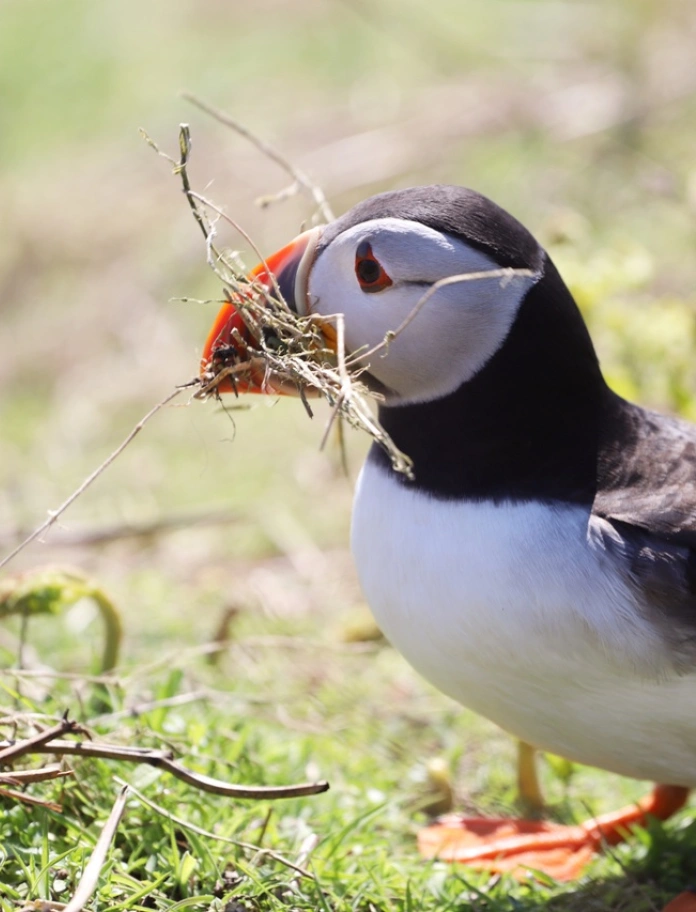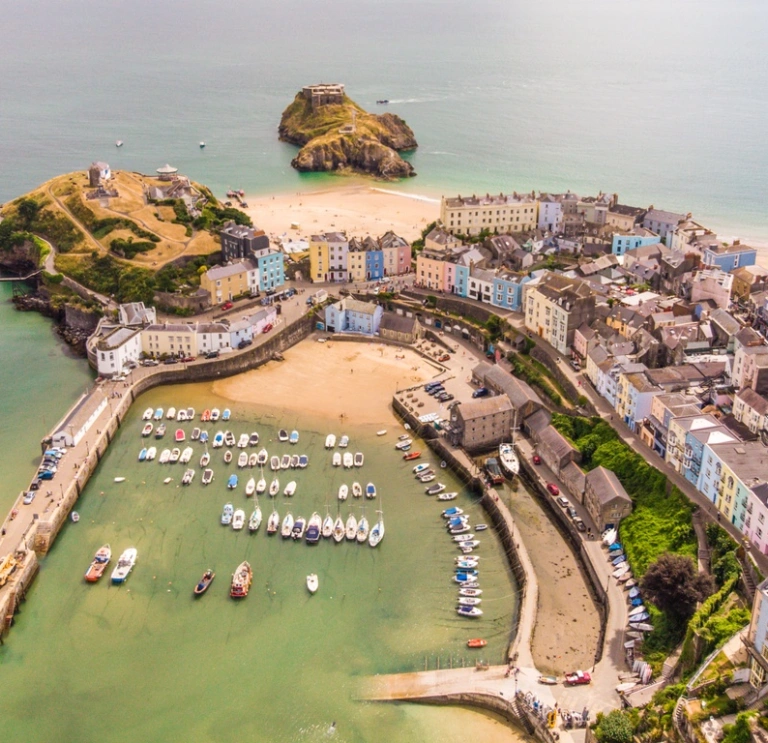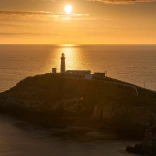Beautiful beaches
There are cracking staycation spots all along the Welsh coast. Some are perfect for just feeling the sand between your toes; others are all about adventure activities and watersports. The Blue Flag awarded Langland Bay, on the Gower Peninsula, attracts top surfers, while sailors gather at Abersoch on the Llŷn Peninsula. Tuck yourself away in a seaside cottage or a funky boathouse, and you could discover some insiders’ favourites: Cwmtydu in Ceredigion, for example, or the pebble-strewn Porth Padrig on Anglesey's north coast.
Pembrokeshire has the lion’s share (or perhaps I should say dragon’s share) of Wales’ Blue Flag beaches – the stunners that environmentalists, conservationists and lifesavers have singled out for awards. To fly a Blue Flag, a beach must be clean and safe, with essentials such as drinking water, information boards and those all-important toilets.

The Wales Way
How about a road trip? The Wales Way is a family of three national routes that lead you into the heart of real Wales. Knitting together spectacular scenery, they lead to places stuffed with possibilities, from Eryri's hiking trails and Pembrokeshire’s coasteering spots, to the high-end restaurants of Monmouthshire and the Wye Valley.
There’s no need to rush. You could spend six days driving along The North Wales Way from Anglesey to the border. If you've got a full week, follow The Cambrian Way through Mid Wales, or The Coastal Way around Cardigan Bay with quirky campsites and ecolodges to explore along the route.
With most electric vehicles able cover more than 200 miles on a single charge, to make your road trip on The Wales Way as sustainable as possible, you could opt to travel in an electric car - making your staycation as green as those gorgeous, rolling hills. You could also explore by bike or by foot – an ideal way to slow down and really get to the heart of Wales.

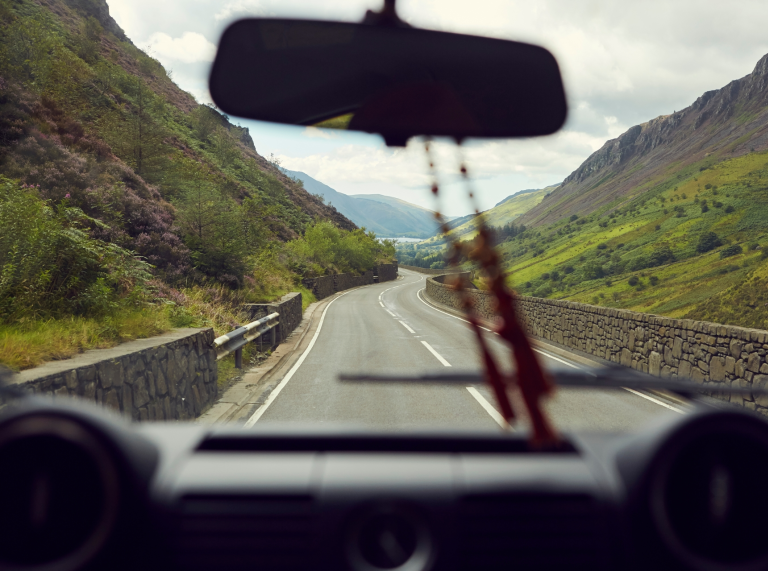
National Landscapes of Wales
Wales is rightly famous for its National Parks: Eryri (Snowdonia), Bannau Brycheiniog (Brecon Beacons) and the Pembrokeshire Coast. All three have scenery to knock your socks off.
In addition, there are five Welsh National Landscapes, three of them coastal (on Anglesey, Gower and the Llŷn Peninsula) and two inland (in the Wye Valley and Clwydian Range). Each region has its own, understated atmosphere; from Anglesey’s restless coves to the Clwydian Range’s heather-cloaked summits.
If you’re planning a camping staycation, these spots are excellent choices. The Wye Valley is right on the border with England, and visiting from Cardiff, Bristol or London is a breeze. The glossy river Wye, edged by tree-cloaked banks, is genuinely picturesque, and paddling along it by canoe or stand up paddleboarding is just dreamy.
Wales is blessed with plenty of lesser-known beauty spots, too. Stride out across the Cambrian Mountains, for example, and you’ll may find you have its wild upland landscapes to yourself.
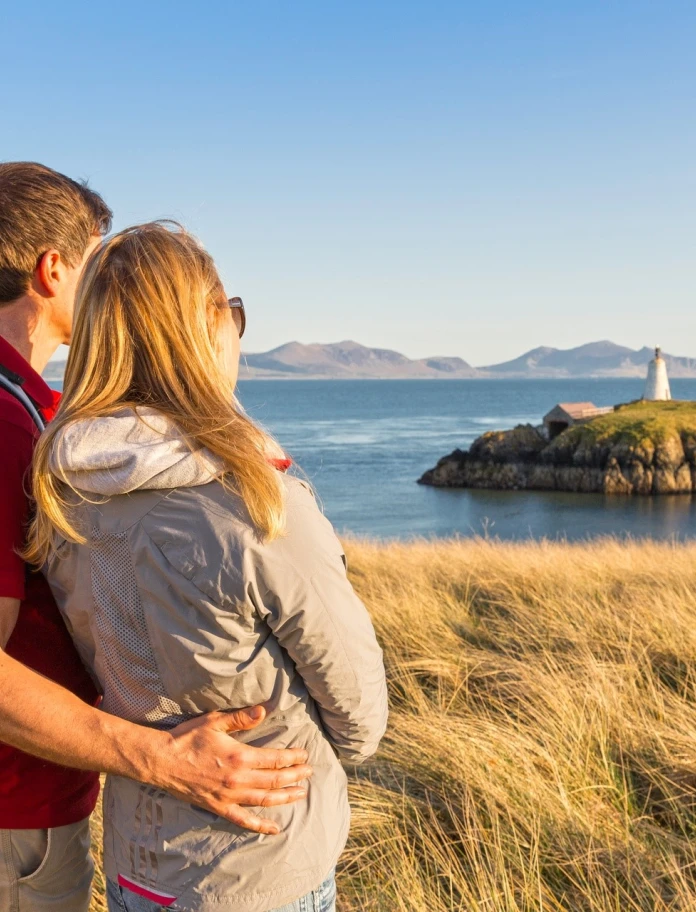
Dark sky destinations
Gazing at the stars can add an extra special sparkle to your staycation in Wales. On a crisp, clear night, prepare to be dazzled. Wales has three IDA International Dark Sky Parks and Reserves, in Eryri (Snowdonia), the Bannau Brycheiniog (Brecon Beacons) and the Elan Valley. Plus a network of unofficial dark sky destinations, where light pollution is refreshingly low. They’re peaceful places to stay, and fun to visit with a local expert, who will help you de-code what you see and perhaps teach you some traditional Welsh names. Orion’s Belt, for example, is sometimes called Y Tri Brenin (The Three Kings); Lyra is Telyn Arthur (Arthur’s Harp) and the Pleiades are Y Saith Seren Siriol (The Seven Cheerful Stars).
Winter, when the hours of darkness are longest, is a wonderful season for stars. It’s a time to wrap up warm, filling the days with bracing walks or bike rides and rounding the nights off nicely with drinks by the fire in a cosy country cottage or pub.
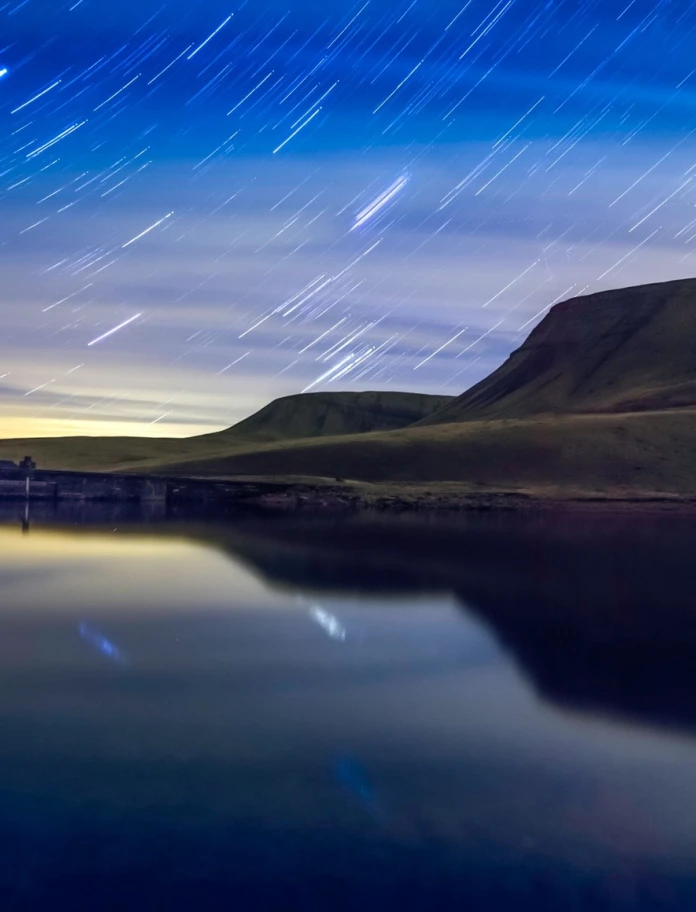
Wildlife havens
Who can resist a puffin? On Skomer and Skokholm, summer sightings (and smiles) are pretty much guaranteed. Elsewhere in Wales, red kites soar on elegant wings, scarlet-legged choughs tumble on the clifftop breezes and blackcaps warble from the hedgerows. In total, more than 400 species have been recorded in our wildlife-rich nation. And that’s just the birds. With a rich mosaic of habitats including wetlands, woodlands and mountains, Wales is an internationally recognised wildlife haven.
To get back to nature, pick a staycation spot deep in the countryside: such as the Oakeley Arms, a hotel surrounded by ancient oaks, or perhaps Dolgoch, or a bird-lovers hostel.
Dolphins and seals are surprisingly easy to find off the coast of Wales. Pembrokeshire and Ceredigion’s skippers know where to look. Rarer species, such as water voles, polecats and greater horseshoe bats, are elusive, but they’re here, leaving tracks and traces to prove it. How exciting is that?
